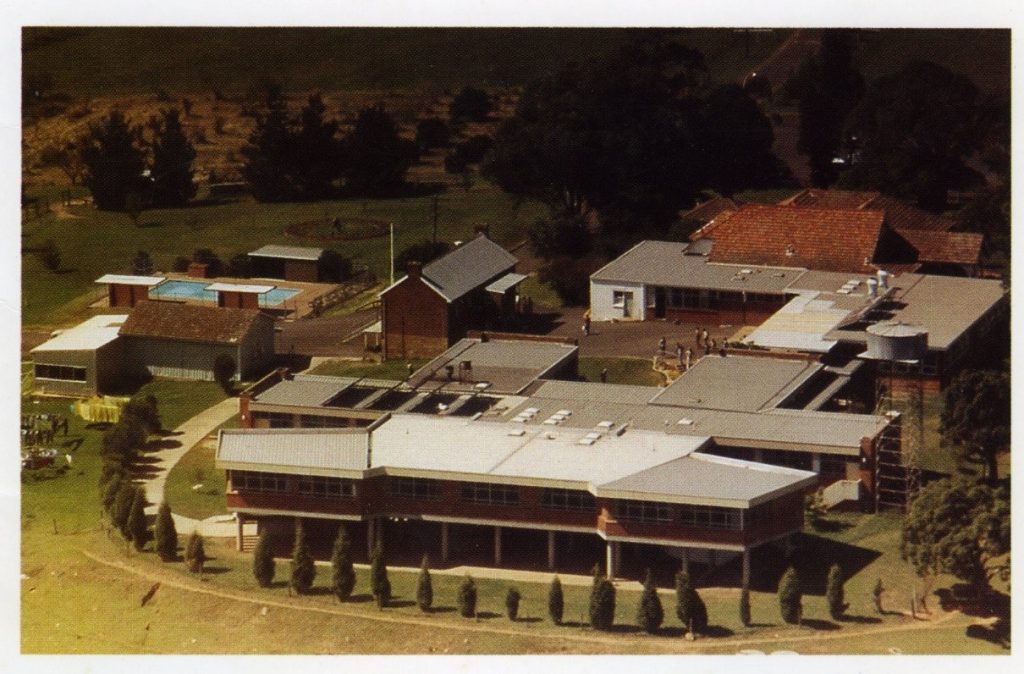by Judith Lewis
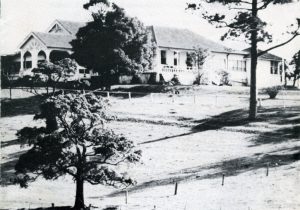
Earliest History
The earliest mention of Box Hill has been traced to 1811. Samuel Terry, a successful emancipist had been transported, in 1801, for stealing stockings. Having served his full sentence he became very successful and established “Box Hill Farm” on 1,700 acres that he purchased in 1819. In 1831 his son, John Terry, married Eleanor Rouse, the third daughter of Richard Rouse. They came to live at Box Hill Farm where, between 1831 and 1834 he had 10 assigned servants. John died on 25th November 1842 as a result of a fall from his horse. The Box Hill property was inherited by John’s son, Samuel Henry Terry.
John’s grandson, George Terry, married Nina Rouse on 24th April, 1895. They lived at Rouse House for about a year whilst the house at Box Hill was being renovated. George was declared bankrupt in 1921, the Box Hill land was subdivided and the homestead block of 212 acres was transferred to Nina, who had to borrow to buy it. By 1924 George and Nina were both bankrupt. The remaining 212 acres was sold and the Terry family moved to Rouse House, which Nina and her sister Kathleen had inherited from their mother, Bessie.
The Handicapped Children’s After-care Co-operative Society
Foundation and Aims
Hazel Nelson, a founding member of the Sub-Normal Children’s Welfare Association (now known as The Challenge Foundation), organised the establishment of the Handicapped Children’s After-care Co-operative Society, which was registered in July,1954. The Society’s aim was to establish Garden Colonies where handicapped persons over 16 years of age could live, for the rest of their lives, in pleasant surroundings.
Enter W.V. McCall
Hazel found Box Hill Farm, then owned by Mr (later “Sir”) William V. McCall, for sale through a Windsor Real Estate Agent. Hazel rang Mr McCall to make an appointment to see the inside of the house. Hazel spoke to Mr McCall’s son Bill who told her his father was “at the pictures”. Mr McCall rang Hazel at 10:45pm that night and he and Hazel spoke till 2am the next morning.
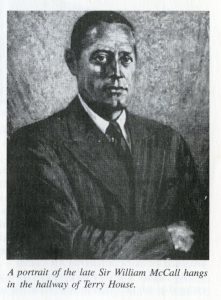
An appointment was made for the following Monday. They met on several subsequent occasions and Mr McCall nicknamed Hazel “Dynamite”. Mr McCall’s sister was a cripple and he told her he remembered his father saying, “Bad as it is, it’s a blessing she’s not sub-normal”. Hazel also remembered Mr McCall saying, “I’ve never been known to give more than a pound to charity. If you give too generously they don’t feel they have to work for it”.
The Acquisition
In 1956 a joint meeting of the HCACS and SCWA supported the acquisition of Box Hill Farm. Four representatives, including Hazel, then met Mr McCall at his Martin Place office to pay the deposit on the purchase. When the Secretary produced the cheque book Mr McCall said, “There’s no need for that. I’m giving it to the Association through Mrs. Nelson. You have no money, but I admire your spirit”.
Mr McCall’s donation comprised the original 43 acres and building. Shortly after this the Association purchased 10 acres to give more frontage to Terry Road and better access to the home.
A Branch is Formed
A meeting of Association members who were parents or relatives of older boys was called and the Box Hill Branch of the Association was formed. The Association handed control of the property to the Branch for development as a residential home for boys over 16 years. The initial finance of the Branch was donated by members attending this meeting. The founding committee was:
President: Mr Tom Ross, Vice President: Mr Vic. Milesky, Secretary: Miss Betty Willis, Treasurer: Mr Frank Georgeson, Committee: Mr Harry Street, Mrs. Molly Laird, Mr Eric Hutchins, Mrs. Netta Dickinson, Mr George Bryer, Mrs. Joan Potter, Mrs. Marjorie Hambly
The homestead was structurally sound but, as it had not been occupied for some time, was not suitable as a residential home. Fund raising began to raise the finance needed to renovate the buildings and provide the facilities and furnishings. As money had to be raised quickly a series of Art Unions was planned. A professional promoter was engaged to sell the tickets by telephone. A flat was rented at Milsons Point, the Branch members voluntarily did clerical work and the promoter set about selling and what a seller he proved to be! He sold the tickets in one prize, a Holden car, with 1,000 tickets selling at £5 ($10) a ticket, in a very short time. The Branch was on its way!
The Work Begins
Altogether 13 Art Unions were run, raising about £17,000 ($34,000). The monies raised enabled the Branch to buy an additional 35 acres to bring the area of the property to 88 acres (36.2 ha) and to keep the home going.
Although some specialist labour had to be employed, most of the renovations of the buildings was undertaken by Branch members and their friends. Notable assistance came from the Bankstown Lions and Apex Clubs. Don Sinclair, a friend of President, Tom Ross, and a retired plumber with the Railways Dept. volunteered to stay at The Home and do the required plumbing work, donating his wages back to the Branch on the completion of the work.
The First Residents Move In
By August, 1957 the renovations and alterations made it possible to start with six boys in residence. At first, the staff consisted of a married couple, Mr and Mrs Sterry, with the assistance of parents, particularly mothers, who organised a voluntary roster and stayed at the Home for short periods.
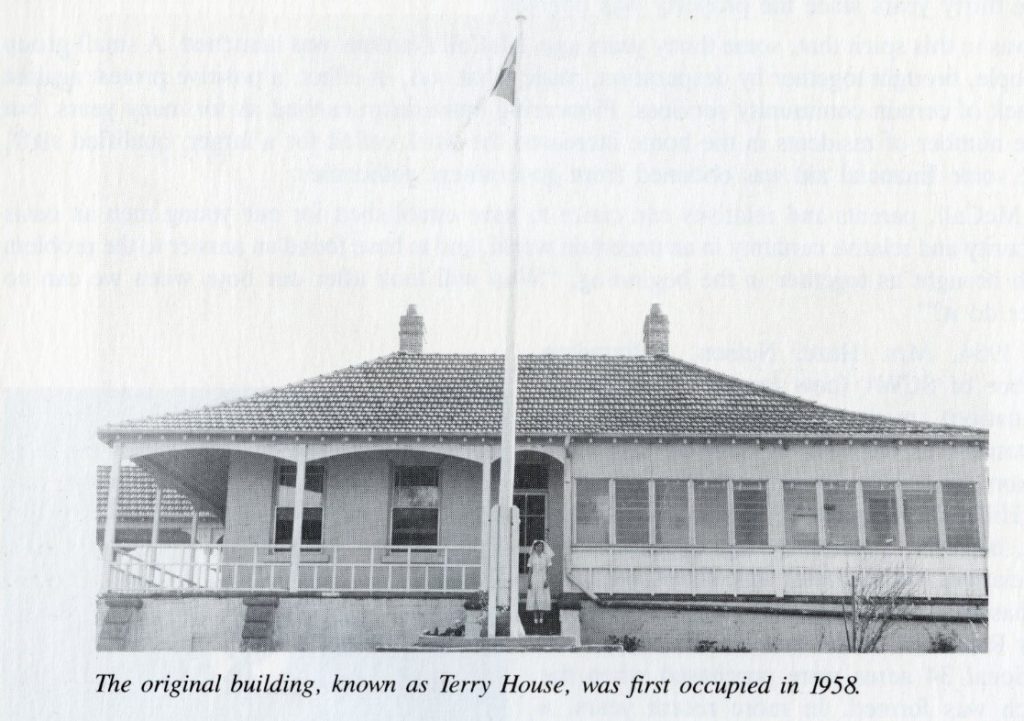
Official Opening
The Home was officially opened, by the Hon. W.F. Sheahan, Minister for Health, on 27th September, 1958, when there were 14 boys in residence. On that occasion Mr McCall officially handed over the property to Tom Ross, President of the Branch. Hazel Nelson was made Patron of the Home, Betty Willis was still Secretary and Harry Street was Treasurer and there were 48 members listed as Branch members. As the original intention of the first committee had always been that the land would provide occupational therapy and be used to grow food for the Home use it was named “The McCall Garden Colony”.
Early Days
The 11 member Branch Committee, elected annually, helped keep administrative costs to a minimum. The Treasurer provided monthly up-to-date financial statements. The Committee appointed and employed the Manager and, in the early days, engaged all staff. On many occasions managers complained of the choice of staff so the Manager became responsible for engaging medical and domestic staff.
Early in 1961, when there were 12 boys in residence, the Committee applied to the NSW Health department for a licence as a private hospital. This was finally granted. Then, in November, the Home was approved as a Convalescent Home by the Commonwealth Department of Health. The grant of hospital benefits lightened the financial burden and enabled the Branch to carry on.
Terry House and Nelson House
Considerable renovations to Terry House, the main building, were required to meet both the regulations of the Health department and the needs of a much larger family than the house had originally catered for. One verandah was glassed in to make a larger ward and another to create office space. With Terry House full, the upper floor of the barn was converted into a ward for seven and the ground level was partitioned and converted into three rooms for living quarters for staff. The building was named “Nelson House” after Branch Patron, Hazel Nelson.
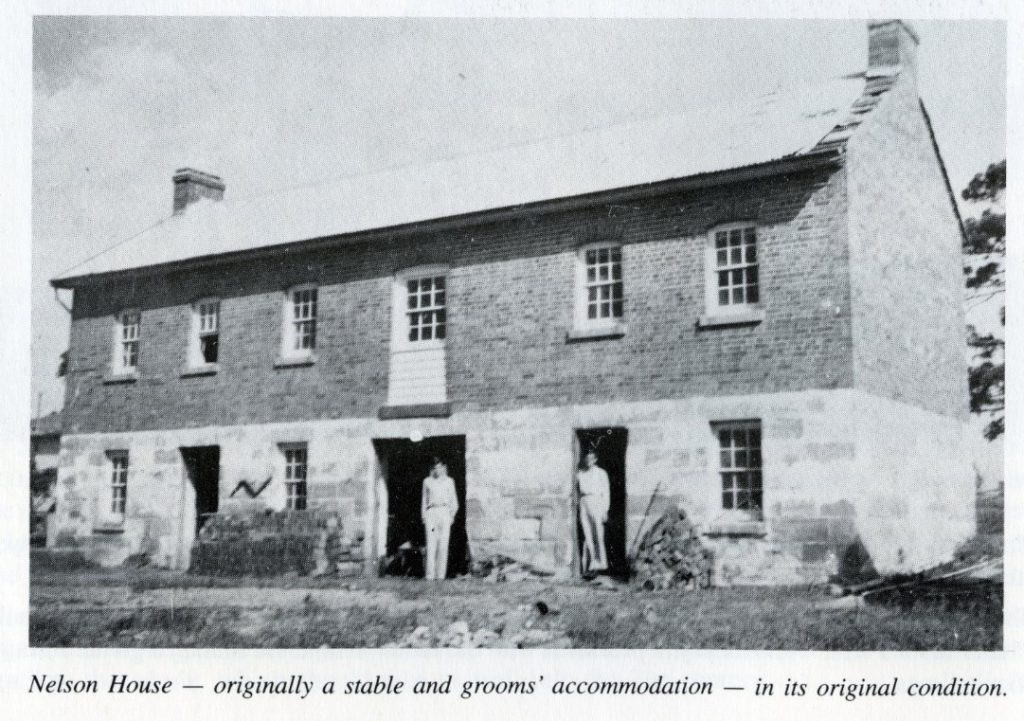
The Ross Wing
The number of boys grew steadily to 29. In 1963 the roof of the homestead was renewed and the Ross Wing was started, by obtaining a number of huts from the RAAF Base at Richmond. Parents dismantled these huts that were transported by Baulkham Hills Lions’ Club and Branch member, Arthur Joel. With considerable additional material, and the help of Lakemba Services Club, these huts made the “Ross Wing”, named after the Branch’s first President, Tom Ross.
The Vic Milesky Dining Hall
In 1963 city water was connected. And in 1964 a swimming pool was installed to cater for the 40 boys now in residence. As the number of boys and staff increased more office space was needed and, in 1967, an office was built onto a corner of the homestead. In the same year a long low building, a kitchen and dining hall was also added to the homestead. The dining hall was named the “Vic Milesky Dining Hall”, after the President who had kept the Branch together through four difficult years.
The First Handicrafts Centre
The first Handicrafts Centre was two trams (obtained at no cost) and lifted into place (at some cost) onto brick piers 20 feet apart. A floor was laid between the trams and the whole was covered with roof and walls. A house for the Resident Manager was completed, on Terry Road, in May 1969. Prior to this the early managers had occupied the master suite of the main house.
Ross House
When Fire Commissioners insisted on changes, including fireproofing to the Ross Wing it was decided, in 1971, to replace the Ross Wing with a new building which would include wards, a centrally situated treatment room and ablutions facility and, on the lower ground floor, a recreation room, boiler room and new laundry. The original laundry, built by parents to cater for 30 patients, was inadequate to cater for the now 49 patients. On 14th September 1975 Ross House was formally opened by NSW Governor, Sir Roden Cutler VC, KCMG, KCVO, CBE, Patron of the Subnormal Children’s Welfare Association. This provided 44 beds with greatly improved conditions.
The overall cost of the new buildings and alterations to Terry House was $454,000 of which the Branch received $308,00 from the Federal Government. The Branch, with about 100 members, raised the remaining $146,000.
Activity, Sports and Recreation Centres
In 1977, in line with conditions in Ross House, central heating and new lighting was installed in Terry House and the seven residents of Nelson House were transferred there. The upper room of Nelson House became the Activity Centre with the large room on the ground floor of Ross House becoming the sports and recreation room. This meant all residents had covered access to recreation rooms, meals and ablutions and administration could be both eased and improved with 22 accommodated in Terry House and 44 in Ross House.
Acceptance into the Home
Parents or guardians of boys admitted to the Home had always been expected to work to help the Home, either physically or in fund raising, or in both ways. Once a boy had been accepted into the Home he should be kept there for the rest of his life provided that his mental or physical health did not deteriorate to the extent that the Home could not provide for his welfare. The first three months of residency was regarded as probationary. Before final acceptance, consideration was given as to what was best for all the residents, not only the boy concerned.
For a brief period, in the 1960s and early 70s, parents were asked to pay £600 ($1,200) to endow a bed. In January 1973 an official notice re Convalescent Homes stated, “No extra charge will be payable by, or on behalf of a qualified nursing home patient except in respect to the matter not relating to nursing home care.” Since then no endowment was sought. Four beds had been endowed by the Subnormal Orphans Trust Fund. Two were occupied, two kept for temporary admissions.
Home Life
A distinctive feature of the Home was that no locks or keys, bars or bolts were used to confine the patients. A regular routine of life among their peers tended to bring contentment and, in the first twenty-one years only two had temporarily run away. All residents were encouraged to be self-sufficient. They would wash and dress themselves, make their own beds and keep the space round them tidy. They helped in the dining room, cleaning away after meals and stacking the dishwasher.
A daily programme saw three groups alternate between working in the handicraft centre, the house or on the farm. All took part in recreational therapy, swimming etc. The activities were important forms of occupational therapy, developing character and ability. Care was taken to fit the task to the individual. Handicrafts were exhibited in local shows and 25 boys were engaged in active farm work, in the dairy, caring for pigs or working on the 2 acres of fruit and vegetable gardens.
Relaxation
As well as regular bus outings boys may have 28 days leave of absence, which was arranged between the parents and the Resident Manager. Parents and guardians were encouraged to visit the boys every other Sunday. An Annual Fete was held, organised by the Ladies Auxiliary, consisting of the mothers of the boys and a few friends. In the late 1970s Lakemba Services Club, Perry Park Social Club and the Riverstone and District Lions’ Club were acknowledged for their financial support.
Staff and Health
In early years distance from Sydney made it difficult to attract and keep staff. In 1968 Mr John O’Brien, who had both psychiatric and general nursing certificates, came as Resident Manager, with Mrs. Etta O’Brien, his wife, as a certificated nurse. They cherished and developed a family atmosphere at the Home. Regulations at that time required one nurse to ten patients and two nursing aides for each nurse. Local doctors co-operated willingly.
During the 1960s Chaplains from Richmond RAAF Base used to come and talk to the boys. When this arrangement lapsed, Mrs Maisie Gillespie, assisted by her husband, Jim, and daughter, Mary, from Riverstone’s Presbyterian (later Uniting) Church, held a monthly service. The Gillespies carried out this important ministry for 25 years, until they moved from the district. A Franciscan brother visited weekly.
By working for the health of those who depended on them the parents, guardians and friends who made up the Branch created and nurtured an oasis of security, happiness and certainty. In doing so they produced a solution to the problem that had brought them together, “Who will look after these handicapped people when their parents are no longer here?”
Bibliography
The First Twenty-one Years of the Box Hill Branch of the Subnormal Children’s Welfare Association; 1978
The McCall Gardens Story; Box Hill Branch of the Challenge Foundation of NSW, 1987
